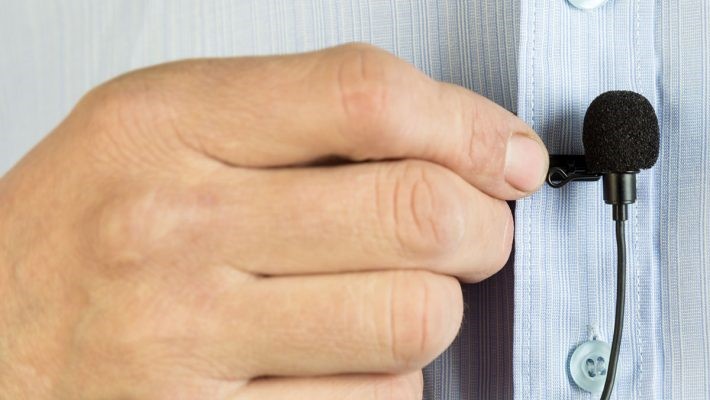Types of Microphones For Conference Calls
Mic pick-up pattern really depends on the room
Conference calls are one of the primary forms of communication for most remote employees. That’s why crystal-clear sound is so important. Microphones are extremely sensitive, there is no need to raise your voice. Adjusting volume is the job of sound technicians. If you are too loud, your voice may get tired easily. If you whisper into the microphone, however, your speech may be less intelligible too.
Lapel Mic
The second most convenient type of microphone. Much easier to put on and take off. It may create more background noise because it is farther away from the mouth.It can also – in some cases – create rustling sound, if a piece of clothing accidentally rubs against it, so caution should be exercised. Used jointly with a wireless transmitter as well.
Handheld Microphone
The least convenient kind, usually used for Q&A.It requires very strict microphone discipline. It can be installed on the microphone stand or actually held in your hand.The most common mistake when using this kind of microphone is to hold it too close to your mouth.The standard recommended distance is about 4-6 inches (10-15 cm). If the microphone is too close, it will pick up the popping and hissing sounds of sibilants and plosives in your speech (“S”, “P”, “T” etc.) and will distort your speech sometimes beyond recognition.
Tabletop Microphones
Commonly used for round tables and panel discussions. If it is a panel discussion and you are using tabletop microphones, make sure that you turn your microphone OFF when you are done speaking.Most modern microphones have ON and OFF lights. It is important, because – if you do not turn your mic OFF – interpreters may hear other conversations, background noise etc. and may not be able to interpret.
USB Microphones
USB microphones are super simple to set up. Just plug them into your computer’s USB port and your conference call software should connect automatically. Most USB microphones include adjustable desktop stands that make it easy to find the perfect mic placement. Many USB microphones feature adjustable pickup patterns, making them perfect for solo or group calls. Since they don’t require any additional gear, USB microphones often include gain controls and headphone outputs directly on the mic itself, making them ideal for employees working on the go.
XLR Microphones
XLR microphones, let you interface with professional audio equipment like mixers and signal processors, making them a great choice for work-from-home professionals with audio-related interests like music recording, podcasting, game streaming or creating YouTube videos. However, XLR microphones require a little more equipment to set up. Since there’s no USB cable, XLR mics need an audio interface to connect to your computer.
We’d love To Meet You In Person Or Via The Web!
Main Office: Suite M-01, 512, 3rd Street, Abu Dhabi, UAE
Phone: + 971 2 6767019
WhatsApp: + 971 55 3979668
Email: web@OfficePlusUAE.com







